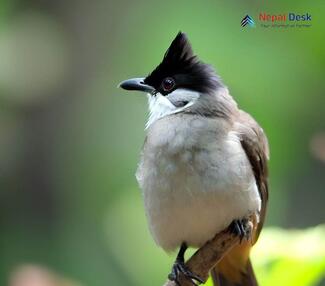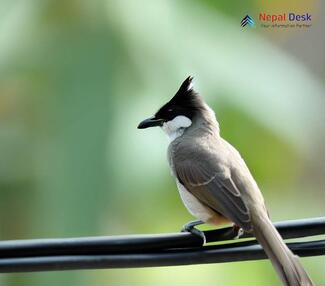Nepal hosts a diverse ecosystem, with its stunning landscapes ranging from the towering Himalayas to lush tropical forests. Home to numerous bird species, this natural paradise provides a fitting backdrop for the exquisite Sooty-headed Bulbul (Pycnonotus aurigaster), a bird that has captured the interest of ornithologists and bird watchers alike. In this article, we will explore the fascinating details of this charming avian species and delve into its presence in Nepal.
An Overview of the Sooty-Headed Bulbul
Sooty-headed Bulbuls predominantly sport a greyish-black head, which contrasts with their whitish underparts and olive-brown wings. Their eyes are enveloped by striking white rings that beautifully complement their yellow vent region. These medium-sized songbirds measure around 20 centimeters in length, flaunting a trademark long tail that grants them an elegant appearance.
The Chorus of the Sooty-Headed Bulbul
Renowned for their melodious songs, these birds possess a complex and enchanting repertoire. Often heard emitting a characteristic 'chirp,' they engage in vocal duets and social singing, enhancing the symphony of nature that surrounds them. Bird enthusiasts can identify this peculiar species merely by paying close attention to their melodic sequences.
Habitat and Distribution
The Sooty-headed Bulbul thrives in various environments, including wooded areas, scrublands, parklands, gardens, and even urban locales. Their distribution spans Southeast Asia - from places like southern China and Vietnam to Malaysia and Indonesia. Despite Nepal's proximity to these regions, it is essential to note that specific sightings in Nepal are less common or yet to be thoroughly documented. Adventurous bird watchers can explore regions adjacent to Nepal, such as its eastern neighbor, India, where these delightful creatures are more frequently encountered.
Diet and Breeding Habits
Sooty-headed Bulbuls indulge in a diverse diet comprising insects, fruits, and seeds. They often forage in groups, hopping from branch to branch while searching for their next meal. When it comes to nesting, these monogamous songbirds construct cup-shaped nests using grasses, twigs, and plant fibers. Within these intricately built abodes, females lay two to four eggs which hatch after an incubation period of approximately 12 days.
Conservation Status
The Sooty-headed Bulbul is currently classified as a species of 'Least Concern' by the International Union for Conservation of Nature (IUCN). However, considering habitat loss due to deforestation and urbanization in some parts of its range, further research on this species' presence in Nepal might provide valuable insights on biodiversity conservation.
In conclusion, the Sooty-headed Bulbul (Pycnonotus aurigaster) is an enchanting bird with captivating appearances and melodious songs. While these avian gems may hold a less prevalent position among Nepal's extensive biodiversity treasure trove, they undoubtedly contribute their fair share of wonder to nature enthusiasts who have the fortune of observing them up close. As our understanding of these unique birds continues to grow, we must strive to ensure their habitats remain intact so that future generations may also delight in the captivating charm of the Sooty-headed Bulbul.




